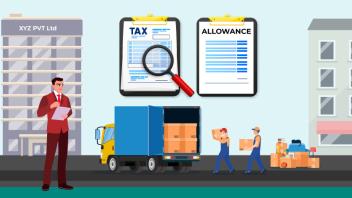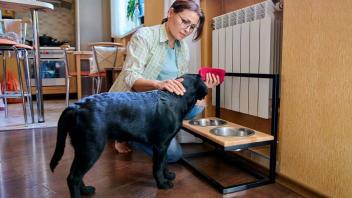30 Essential Tips for Packing and Moving Like a Pro
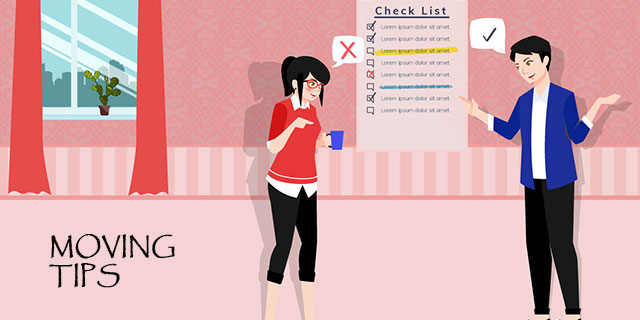
This blog is dedicated to offering you comprehensive and easy-to-follow moving and packing tips. Whether you're a first-time mover or have been through the drill before, our goal is to equip you with all the necessary moving house tips to ensure your transition is as smooth as possible.
So, let's dive into the world of moving with ease and smart packing solutions that will transform your moving experience.
Here, we have segmented the tips according to their priority for better understanding.
Planning and Organization
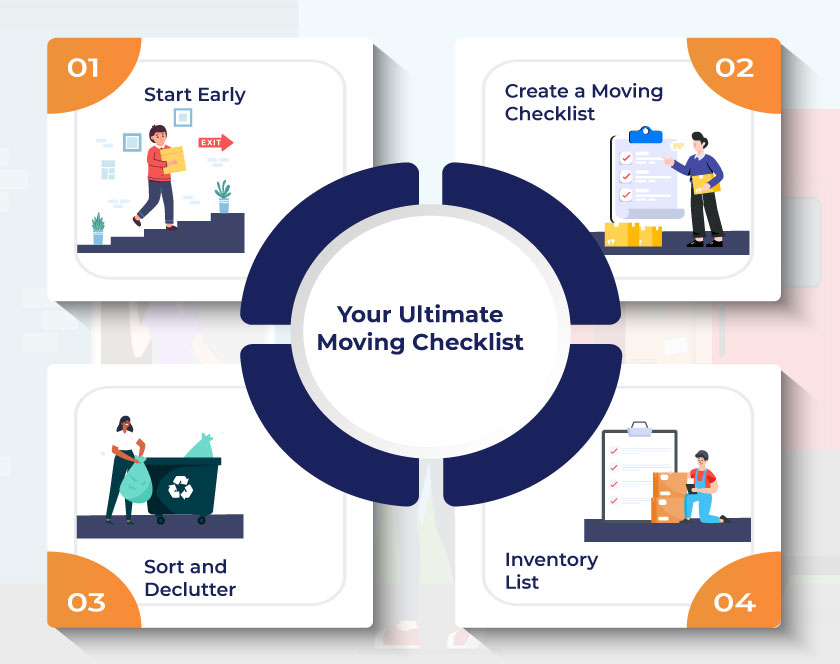
Effective planning minimizes stress, reduces the risk of forgotten tasks, and ensures a systematic packing process.
1. Start Early
- Why It's Important: Beginning your packing early is crucial for a stress-free move. Starting at least two months in advance allows you ample time to pack at a comfortable pace, avoiding the rush and potential chaos as moving day approaches.
- Benefits: Early packing reduces stress and provides a buffer to manage any unexpected issues that may arise. It allows you to gradually sort through and pack items that are less frequently used without disrupting your daily life.
2. Create a Moving Checklist
- Purpose of the Checklist: A moving checklist serves as your step-by-step guide to the relocation process. It ensures all tasks are planned and accounted for from the start of your move to the finish.
- How to Create One: Start by listing every task you need to accomplish, then organize these tasks into a weekly timeline. Include tasks such as acquiring packing materials, booking movers, and setting up utilities in your new home.
3. Sort and Declutter
- Why It Matters: Sorting and decluttering before you start packing helps reduce the volume of items you need to move. This step is critical for minimizing your load and avoiding unnecessary clutter in your new home.
- How to Approach It: Tackle one room at a time. Create piles or use bins to categorize items into what to keep, sell, donate, or discard. This not only simplifies your move but can potentially lower your moving costs by reducing the weight and number of items you’re transporting.
4. Inventory List
- Purpose of an Inventory: Keeping an inventory helps track your belongings during the move and ensures everything that leaves your old home arrives at your new one.
- Creating an Inventory: As each box is packed, list its contents along with a number or unique identifier. This methodical approach aids in the unpacking process at your new home and is especially useful for ensuring all items are accounted for upon arrival.
Packing Materials and Techniques
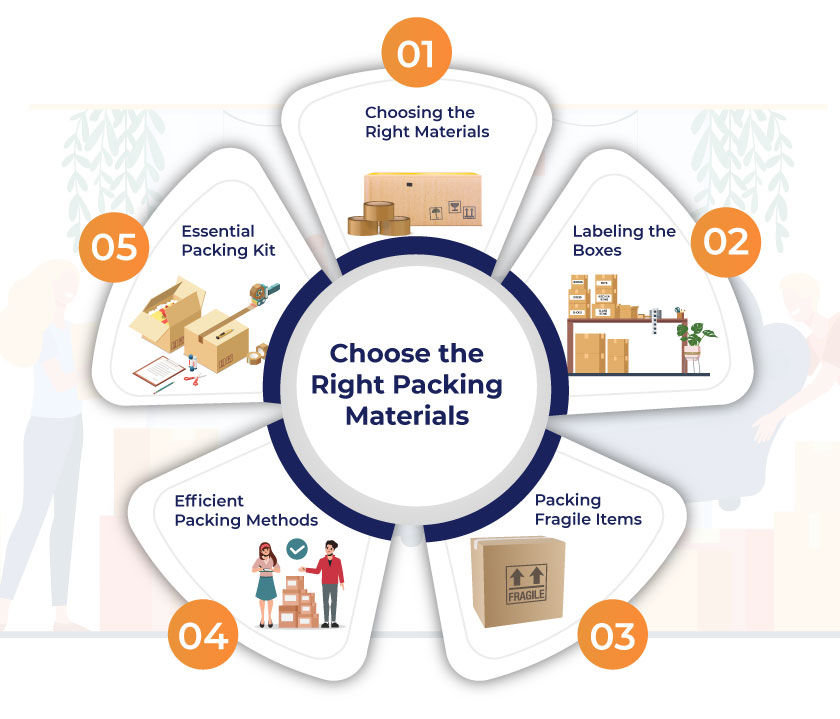
This section delves into the essentials of packing, offering detailed guidance on choosing the right materials and employing the best methods to ensure your belongings are securely packed and protected.
5. Choosing the Right Materials
- Essential Supplies: The selection of packing materials is pivotal in ensuring your belongings travel safely. Standard materials include sturdy cardboard boxes of various sizes, heavy-duty packing tape, bubble wrap, and stretch wrap for furniture.
- Choosing Boxes: Opt for specialized boxes like wardrobe boxes for clothes, dish barrels for kitchenware, and picture boxes for artwork. This adherence to suitable materials is one of the fundamental packing tips for moving, as it directly impacts the safety and manageability of your items during the move.
6. Labeling the Boxes
- Labeling Strategy: Clearly labeling each box with its room destination and a brief description of its contents is one of the most effective moving tips. This practice not only speeds up the unpacking process but also helps you and your movers know the handling requirements of each box.
- Additional Tips: Use different colored labels or markers for different rooms to easily distinguish boxes. Clearly mark boxes containing fragile items to ensure they are handled with care.
7. Packing Fragile Items
- Wrapping Techniques: When packing fragile items, use bubble wrap, packing paper, or even towels and blankets to protect them. Wrap items individually and fill any gaps in the boxes with crumpled paper or foam peanuts to prevent movement.
- Securing the Items: Always place heavier items at the bottom of the box and lighter ones on top. Ensure boxes containing fragile items are not overloaded; this is a crucial tip for moving that helps avoid damage during transit.
8. Clothes Packing Ideas
- Wardrobe Boxes: Use these for hanging clothes. They are quick to pack and unpack and keep your clothes wrinkle-free.
- Rolling vs. Folding: Roll clothes to save space and reduce wrinkles. Pack out-of-season clothes in vacuum-sealed bags to save even more space.
- Layering: For drawers of clothes that won’t be hung up, consider leaving them in the drawer and securing the drawer with stretch wrap. This method can be much quicker and easier.
9. Efficient Packing Methods
- Maximizing Space: To maximize space and maintain order, roll clothes instead of folding, use suitcases for books, and nest pots and pans with padding in between. Efficient packing also involves distributing weight evenly to make lifting easier and prevent boxes from breaking.
- Protection Tips: Double-tape the bottoms of boxes, and line them with soft padding for extra protection. These moving house tips not only protect your belongings but also make the moving process smoother and more organized.
10. Essential Packing Kit
- Last-Open Box: An essential packing kit or 'last-open' box should include items you'll need immediately upon arrival at your new home. Typical contents might include toiletries, a few dishes, basic tools, and a change of clothes.
- Accessibility: Keep this box clearly labeled and easily accessible, possibly even in your personal vehicle. This ensures that no matter how late you arrive or how tired you are, you have your essentials without needing to unpack everything.
Packing Room-by-Room
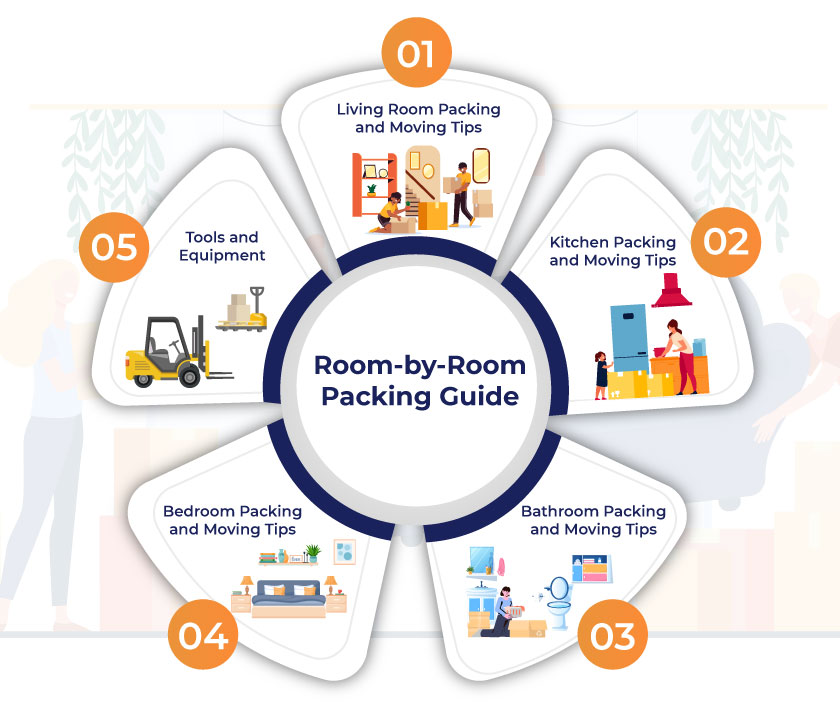
This section is crucial as it provides specialized moving tips and packing techniques for different rooms, ensuring that everything from your delicate kitchenware to bulky living room furniture is transported safely.
11. Living Room Packing and Moving Tips
- Sofas and Chairs: Wrap sofas and chairs in stretch wrap to protect the fabric from dirt and tears. Remove cushions and pack them separately.
- Bookcases: Remove all books and pack them in small, sturdy boxes. Dismantle bookcases if possible, and wrap individual shelves in protective padding.
- Decorations: Wrap fragile decorations like vases and frames in bubble wrap and secure them in boxes labeled 'fragile'. Use tissue or packing paper to fill gaps and provide additional cushioning.
12. Kitchen Packing and Moving Tips
- Appliances: Clean and dry all appliances before moving. Remove loose components or secure them with tape. Wrap each appliance in bubble wrap for protection.
- Utensils and Cutlery: Wrap sharp knives and other utensils in towels or packing paper before placing them in sturdy boxes. Use dividers for organization and added protection.
- Food Items: Pack only non-perishable food items. Seal open packages to prevent spills and pack them in small boxes or plastic bins.
13. Bedroom Packing and Moving Tips
- Clothes: Roll clothes to save space and prevent wrinkling. Use wardrobe boxes to hang dresses, coats, and suits directly from your closet.
- Jewelry: Secure jewelry in a jewelry box or wrap individual pieces in soft cloth or packing paper to prevent tangling and damage.
- Bedding: Pack bedding and pillows in large, labeled boxes. Use vacuum storage bags to compress bulky items like comforters and blankets.
14. Bathroom Packing and Moving Tips
- Toiletries: Seal caps with tape to prevent leaks. Wrap bottles in plastic bags and then cushion them with towels or packing paper in a box.
- Medicines: Pack all medicines in a separate, clearly labeled box. Keep it accessible for easy reach during and immediately after the move.
- Bathroom Essentials: Wrap fragile items like mirrors or porcelain accessories in bubble wrap and mark the boxes as fragile to ensure careful handling.
15. Garage and Storage Areas
- Tools and Equipment: Wrap sharp tools in bubble wrap and secure them in sturdy boxes. Dismantle larger equipment if possible, and keep all parts together.
- Outdoor and Seasonal Items: Clean and dry items before packing. Disassemble items like lawn furniture and store cushions separately.
- Miscellaneous Storage: Label boxes clearly by content and importance. Heavier items should go in smaller boxes for easier handling.
Moving Large and Unusual Items
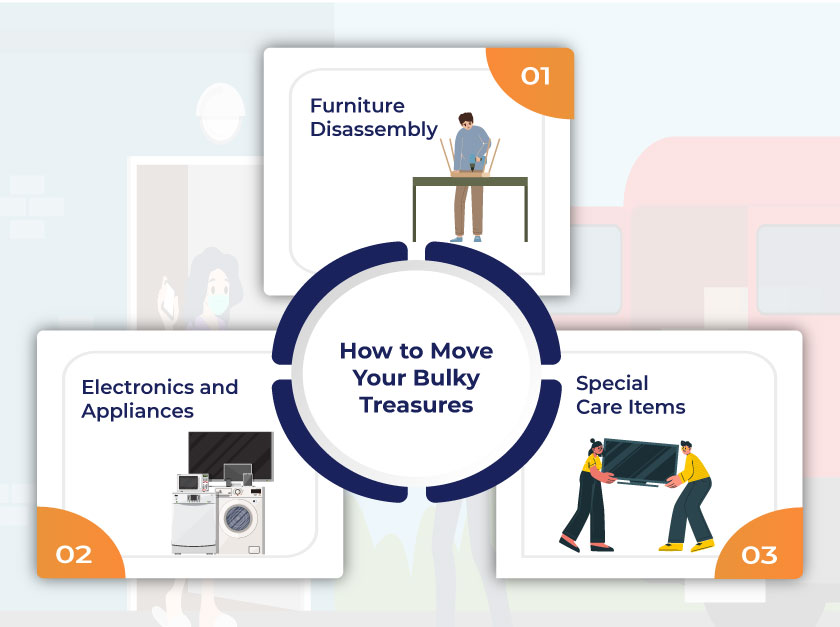
From disassembling bulky furniture to securing fragile artworks and intricate electronics, the strategies outlined here are crucial for preventing damage and ensuring that these items arrive at your new home in pristine condition.
16. Furniture Disassembly
- Preparation Steps: Before disassembling any furniture, ensure you have the right tools, such as screwdrivers and wrenches. Take photos or videos of the furniture from different angles to help with reassembly later.
- Disassembly Process: Remove any drawers, shelves, or detachable parts first. Wrap these separately in protective material. For larger pieces, like bed frames and tables, label each part and keep all screws and fittings in a labeled bag.
- Packing and Labeling: Wrap the disassembled parts in bubble wrap or moving blankets to protect them during transit. Clearly label each package with its contents and destination room.
17. Electronics and Appliances
- Preparation: Unplug and clean all electronics and appliances. For items like refrigerators, defrost and dry them at least 24 hours before the move. Use original boxes and packing materials if available.
- Securing Components: For TVs and computers, wrap screens with anti-static bubble wrap and secure the wrapping with tape. Remove any detachable cables, label them, and pack them separately.
- Transportation Tips: Always transport electronics in an upright position and avoid stacking other items on top. Ensure that they are securely placed in the moving vehicle to prevent any shifts during the move.
18. Special Care Items
- Artwork and Mirrors: Wrap paintings and mirrors in glassine paper to prevent smudging, then add a layer of bubble wrap for protection. Place them in flat-picture boxes or make an X with masking tape over the glass to strengthen it and reduce the chance of shattering.
- Pianos and Other Large Instruments: Hiring professional movers who specialize in pianos is highly recommended due to their weight and sensitivity. Ensure the piano is wrapped in blankets and securely strapped to a piano board.
- Other Delicate Items: For items like sculptures or antiques, custom crating is the safest option. Use plenty of cushioning materials and double-box where necessary to protect against bumps and vibrations.
Hiring Professional Movers

This part of the article will guide you through selecting a reliable moving company, understanding the different types of insurance protections available, and ensuring effective communication with your movers.
19. Choosing a Moving Company
- Research and Reviews: Start by researching local moving companies and reading reviews from past customers. Look for companies with high ratings and positive testimonials about reliability and service.
- Use Trusted Portals: You can hire reliable packers and movers through portals like AssureShift, where the moving companies are meticulously verified and listed.
- Estimates and Quotes: Obtain at least three different quotes to compare prices. Be wary of quotes that are significantly lower than others, as this could be a red flag. Opt for a detailed on-site estimate to get the most accurate pricing.
20. Insurance and Valuables
- Insurance Options: Discuss insurance options with the moving company. Most movers offer basic coverage, but you might want to consider additional insurance for high-value items.
- Handling Valuables: For extremely valuable or sentimental items, consider transporting them yourself if possible. If not, ensure they are properly declared and that your mover is aware of their importance so they can take extra precautions.
21. Communication Tips
- Pre-Move Meeting: Arrange a pre-move meeting with your movers to discuss all details of the move, including items that require special handling, access restrictions at your new home, and any concerns you may have.
- Day of the Move: Maintain open communication with your moving team on the day of the move. Provide them with a contact number where you can be reached at all times.
- Feedback and Instructions: Be clear about where you want things placed in your new home and provide feedback or additional instructions as needed during the unloading and setup.
Moving Day Tips
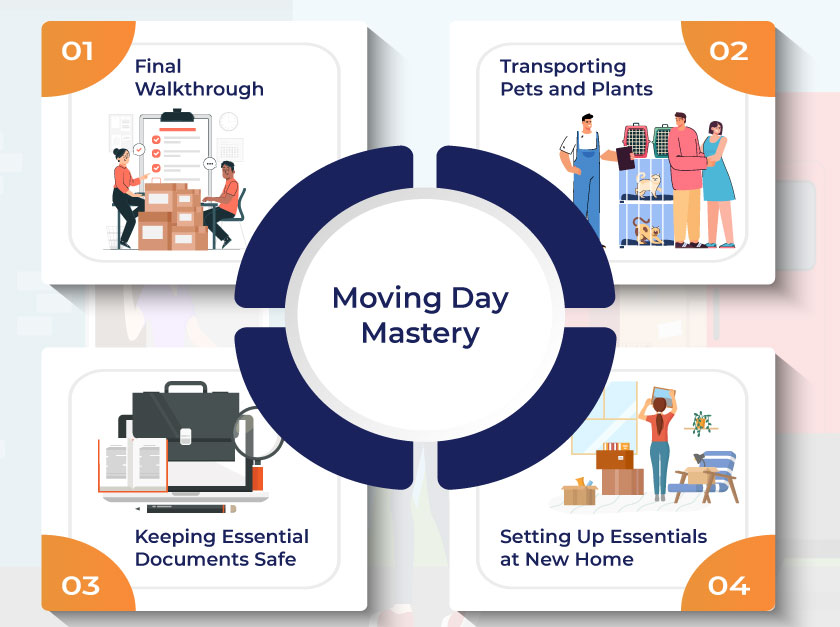
Here we will discuss the specific actions and precautions necessary to ensure a smooth transition on this important day.
22. Final Walkthrough
- Checklist Creation: Before you leave your old home for the last time, create a checklist for a final walkthrough. This should include checking all rooms for forgotten items, ensuring that all windows and doors are secure, and that major appliances are turned off or unplugged.
- Utility Meter Readings: Record the readings of water, gas, and electricity meters to ensure you're only responsible for the utilities you used.
23. Transporting Pets and Plants
- Pets: On moving day, keep pets safe and stress-free by transporting them in a pet carrier with familiar bedding and toys. Ensure they have proper identification and that you have their food, water, and medication handy.
- Plants: Transport plants in your own vehicle if possible. Avoid placing them in the trunk as extreme temperatures can harm them. Water them well before the move and try to stabilize them to prevent too much movement during transport.
24. Keeping Essential Documents Safe
- Document Preparation: Gather all important documents such as birth certificates, passports, lease or purchase agreements, and insurance policies. Keep these documents in a secure, accessible place throughout the move.
- Accessibility and Security: Consider carrying these documents with you personally or using a secure file that can be easily accessed whenever needed. This ensures that no critical information is lost or misplaced during the hustle of moving day.
25. Setting Up Essentials at New Home
- Essentials Box: Pack an essentials box with items you will need immediately upon arrival, like toiletries, snacks, basic tools, and bedding. This box should be the last loaded and first unloaded.
- Strategic Unpacking: Start by setting up the bedrooms and bathrooms to ensure comfort for the first night. Assemble and make beds early, and set up necessary bathroom items to make your new place feel like home sooner.
Unpacking and Settling In
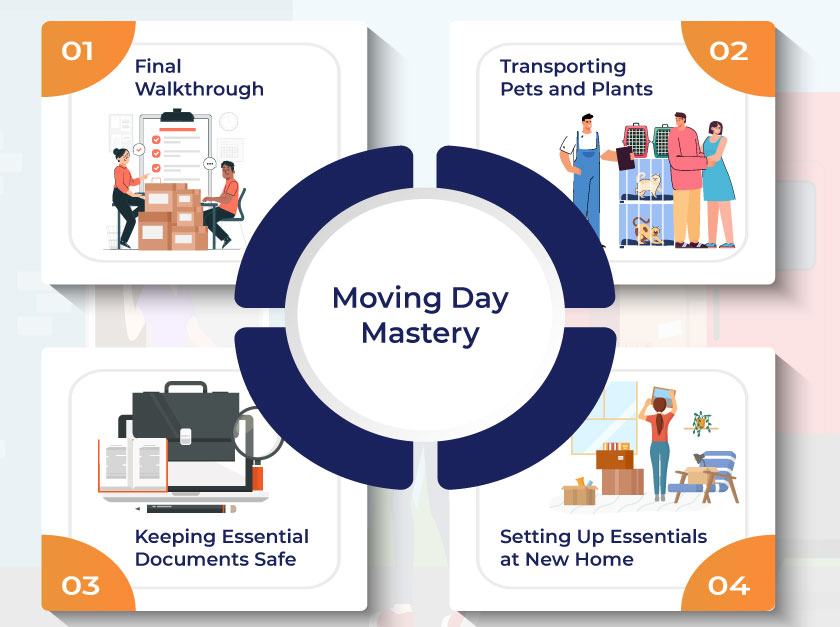
These are the most essential moving tips and strategies to efficiently organize and prioritize the unpacking process, ensuring that your transition into your new home is smooth and stress-free.
26. Unpacking Strategy
- Prioritize by Room: Start with the rooms that are most essential for daily functioning, such as the kitchen and bedrooms. This allows you to quickly settle into a routine, making the rest of the unpacking process less disruptive.
- Essentials First: Unpack the 'open first' boxes that contain day-to-day necessities like toiletries, certain kitchen items, and basic bedding to ensure comfort from your first night in the new home.
27. Organizing Your New Space
- Plan Before Unpacking: Before unloading everything, take a moment to envision where you want items to go. This can save time and energy by reducing the need to rearrange items later.
- Efficient Storage Solutions: Utilize storage solutions such as shelving units, drawer organizers, and closet systems from the start. This will help maintain order and make the most of your space from day one.
28. Child and Pet Safety During Unpacking
- Safe Zones: Create safe areas where children and pets can stay while the bulk of the unpacking is being done. This prevents them from getting underfoot or into boxes that might contain hazardous items.
- Childproofing: As you unpack, immediately childproof each room to prevent accidents. Cover outlets, secure heavy furniture to the walls, and store dangerous items out of reach.
- Comfort Items: Ensure that children and pets have access to familiar comfort items such as toys, blankets, or special snacks during the unpacking process. This can help ease the stress of the new environment.
Post-Move Tips
In this section, we will look at some tips and strategies which will help you for a smooth transition to your new home and community after the shifting process is complete.
29. Address Updates
- Notification Checklist: Create a checklist of all the institutions and services that need to know your new address. This includes your employer, bank, school, doctor, insurance provider, and subscription services.
- Postal Service: Notify the postal service of your address change to ensure that your mail is forwarded to your new home. This can often be done online for convenience.
30. Community Integration
- Explore the Neighborhood: Take walks or drives around your new neighborhood to familiarize yourself with it. Locate essential places like the nearest hospital, pharmacy, grocery store, and parks.
- Meet Neighbors: Introduce yourself to your neighbors. They can be valuable resources for learning about your new area, including recommendations for local services and insights into community activities.
- Participate Locally: Look into joining local organizations, clubs, or groups that align with your interests. Participating in community events can be a great way to meet people and integrate yourself into the neighborhood.
From Packing to Thriving: Closing the Chapter on Your Move
In this blog we've explored a multitude of moving tips and packing tips for moving, designed to assist you through every phase of your relocation process. From the initial planning and organization, selecting the right packing materials, to packing each room effectively. We discussed how to handle large and unusual items with care, and the importance of choosing the right professional movers.
These moving house tips are not just about packing and unpacking; they are about making the entire moving process as seamless and stress-free as possible. Whether you're moving across town or across the country, these tips for moving aim to empower you with the knowledge and tools needed to manage your move efficiently.

